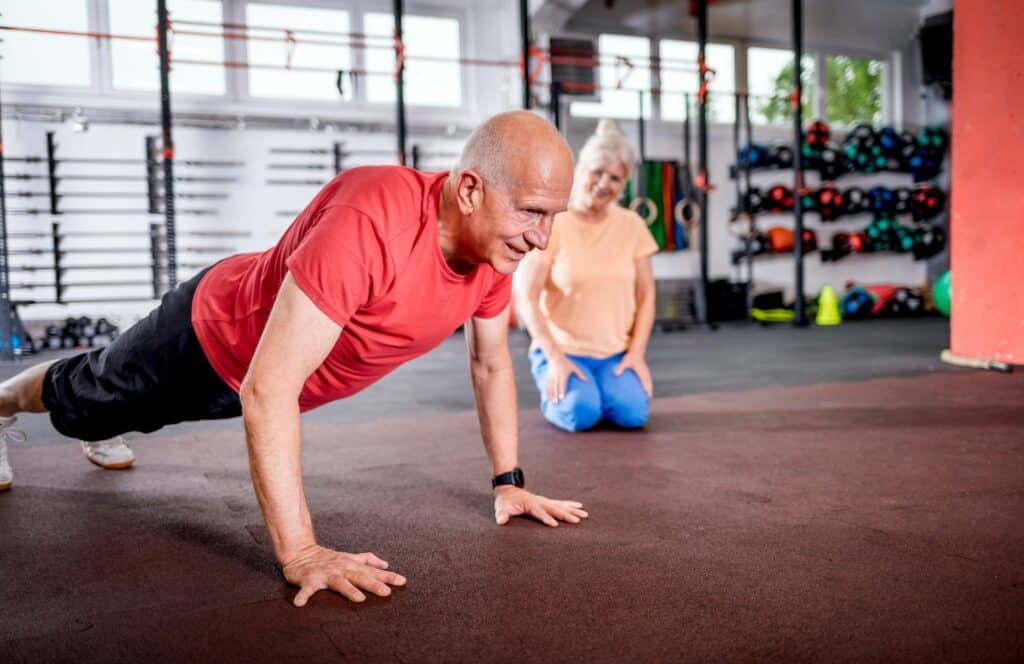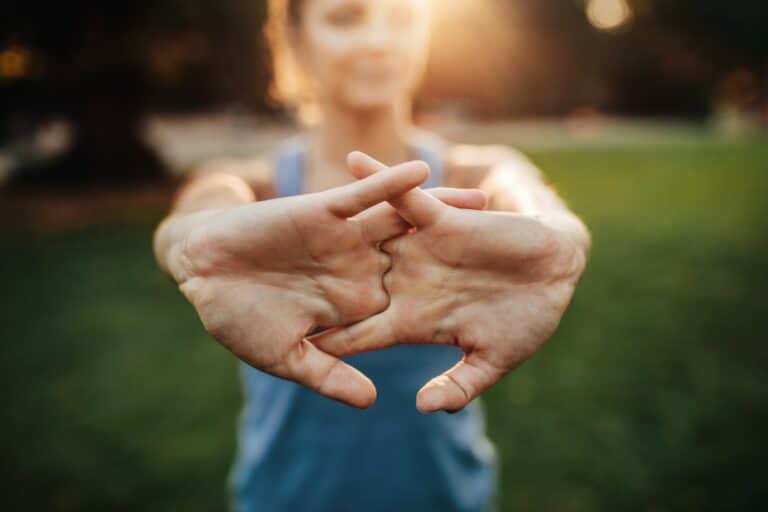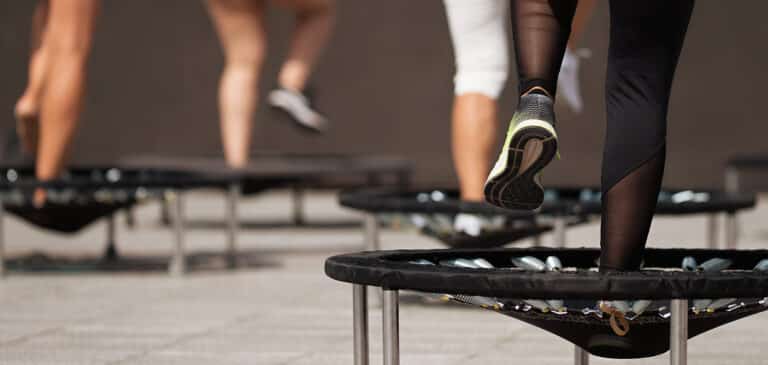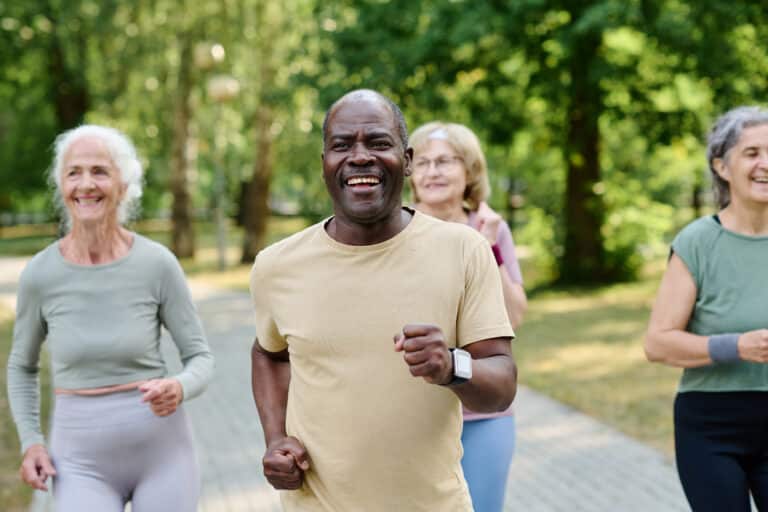Ready to get started with a new exercise routine but need to decide which types of exercise to focus on? Your exercise needs will change as you age, and the types of exercise seniors should focus on may differ from when you were younger.
Research shows us that participating in an exercise program improves nearly all aspects of physical and mental health. The APTA recommends 150 minutes of intense physical activity per week – but which types of fitness are the most important?
From strength exercises for your muscles to cognitive challenges for your brain, the key to healthy aging can be found in not one but several different types of exercise. Each one is equally important to get the most out of your fitness program.
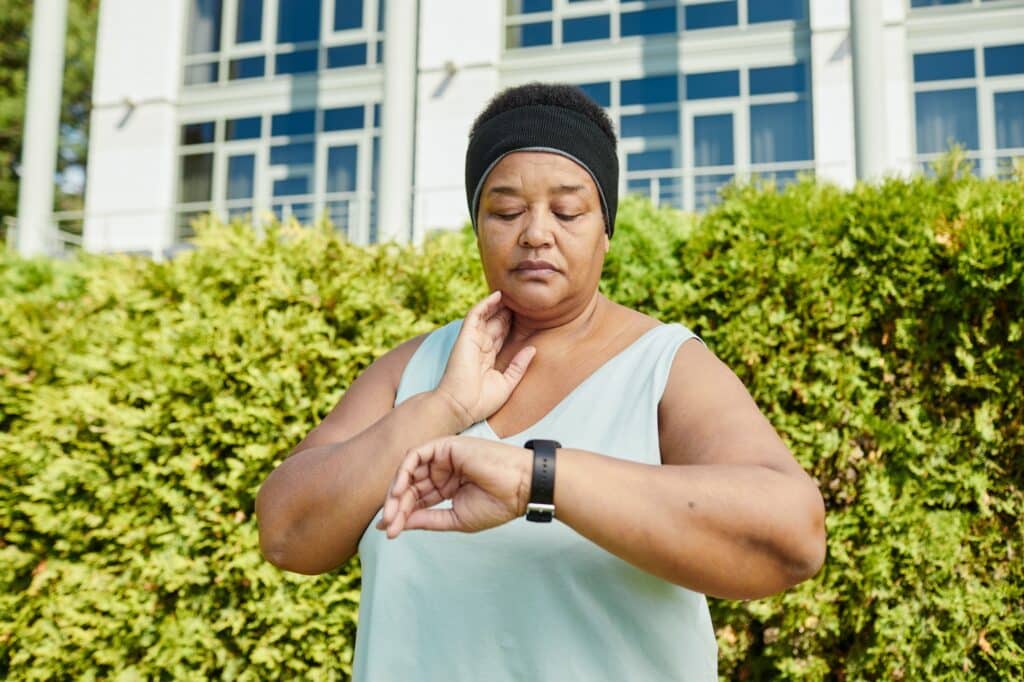
Exercise Goals for Seniors
Your priorities and life goals will change as you age to fit your needs, and your exercise routine is no exception.
In fact, many seniors express that their fitness goals are entirely different from when they were younger. While your fitness goals may have previously focused more on looks and lifting a certain amount of weight, they’re more likely to be about two things now: health and longevity.
As you age, primary body functions like metabolism, nerve function, cognition, strength, and balance can decline, making some of our favorite activities more challenging.
But there is also good news: the more you exercise, the more you can improve and maintain the different types of fitness and body functions that benefit from them.
The five main types of exercise that seniors should focus on are strength, mobility, endurance, balance, and cognition. As you get older, understanding each type of exercise becomes progressively more important to optimize your overall health. (2)
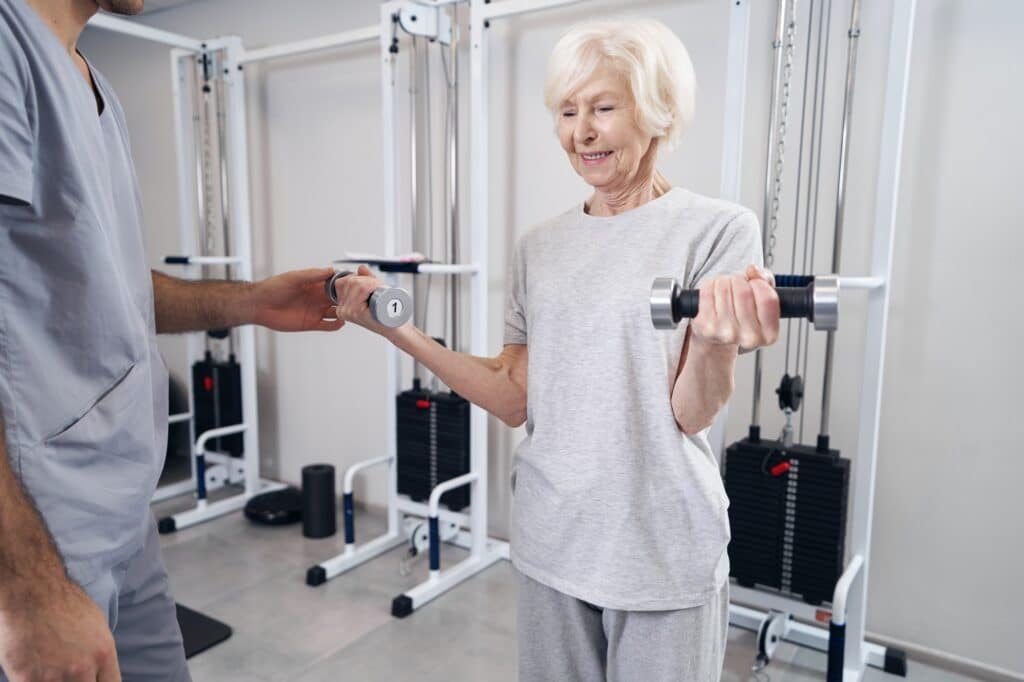
Strength Training Exercise
Strength training (or resistance training) refers to exercise that requires you to move your body against some form of resistance.
Common examples of resistance include lifting weights (like dumbbells), cable machines, or even your body weight. Many gyms have a variety of equipment so that you can work on each muscle group or focus on full-body movements.
Regular resistance exercise improves overall strength and endurance for seniors. Regular strength training can improve muscle mass, bone density, and circulation, improving overall health.
The American Physical Therapy Association recommends two or more weekly strength training workouts to get the best results. These workouts may count towards your 150-minute goal, especially if you exercise at a moderate-to-high intensity.
Try to allow one full day of rest from resistance training between each workout, giving your body time to recover from the previous workout.
Finally, change exercises periodically to give your body variety and limit overuse injuries.
Envato Image: Senior couple biking at the gym
Endurance Exercise
Endurance training, also known as cardio or aerobic exercise, includes moderate-intensity activities requiring steady work over an extended period. Classic examples include walking, running, cycling, and swimming.
The primary goal of endurance training is to exercise our heart and lungs to improve overall health and longevity while building additional strength and bone density.
Endurance exercises significantly increase our metabolic activity, making it very helpful if you are seeking weight maintenance as your metabolism naturally begins to slow with age.
Endurance training uses carbohydrates, so it can be beneficial for maintaining healthy blood sugar while also managing other health markers like blood pressure.
It’s important to pick exercises you enjoy, but be bold and try new styles of cardio or classes at the gym. This helps you to vary the stress on your body and reduce injury risk while learning new movements and skills.
Endurance exercise is a great way to reach your weekly recommended 150 minutes of intense physical activity. It can also give you something new and exciting to focus on while improving your exercise engagement.

Mobility Exercises
Similarly to flexibility, mobility is your body’s ability to move into different positions with ease and control.
For example, think about the motion of reaching down to touch your toes without falling over. Touching your toes is flexibility, but controlling your body throughout the movement to avoid falling is mobility.
Mobility exercises allow you to improve your joint flexibility and circulation while also reducing pain through regular practice. Mobility training can also translate to our activities of daily living (ADLs), like bending over to tie a shoe or painlessly reaching to wash your back.
You can do mobility exercises immediately before or after your main strength or cardio workouts as a warmup, cooldown, or during one of your rest days.
You can even try fitness classes like yoga to help you stay on track with your mobility program.
Focus on movements that feel good and help you relax. Listen to your body if any mobility exercise feels too much. Check out our article about warmups to get started with some simple mobility-based exercises.
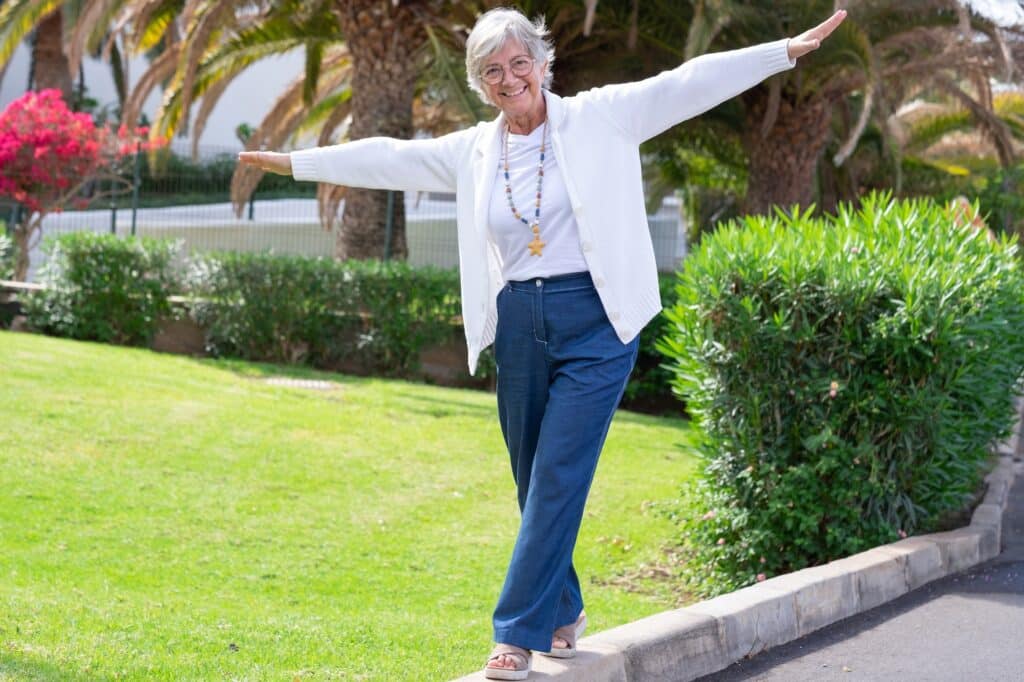
Balance Exercise
While few people train their balance regularly, it’s an essential but easily overlooked piece of a well-rounded exercise program for healthy aging. Balance exercises include standing on one leg, walking heel-to-toe, and balancing on a foam pad.
Of the many benefits of balance training, the biggest is reduced fall risk. Although considered highly preventable, falls account for seventy percent of accidental deaths in adults aged 75 and older in the United States. (3)
Regular balance exercise can help improve the performance of basic movements related to your daily routine and confidence with walking and preventing and recovering from falls.
Your balance system is made up of three parts:
vision (what you see),
touch (what you feel), and
proprioception (your body’s sense of positioning).
Variety is essential, so trying exercises that challenge different parts of your balance system is helpful. For example, you might close your eyes (if safety permits), stand on an unstable surface, or turn your head during balance exercises.
Always ensure that you are near a stable surface while performing balance exercises.
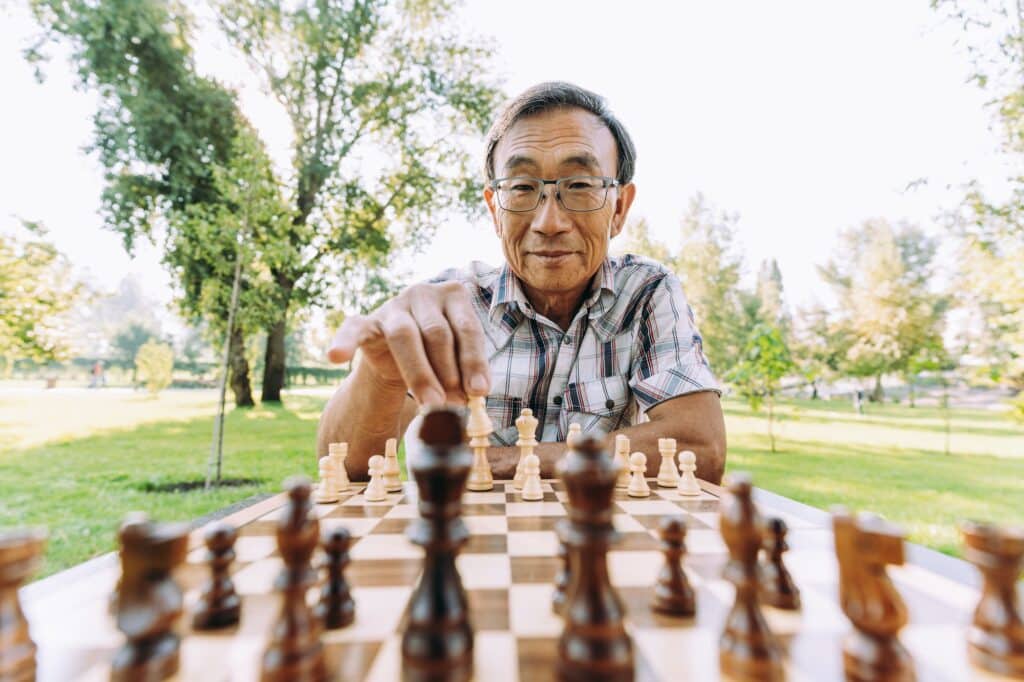
Cognitive Fitness Exercises
Similarly to your physical attributes, regular exercise can help keep your cognitive fitness strong. Like other systems in the body, your brain becomes less efficient over time. Luckily, training your brain is similar to training your muscles, heart, and lungs.
The benefits of training your cognition can be profound. When you perform regular cognitive fitness exercises, you are stimulating your brain to make new connections and strengthen old ones.
These connections improve problem-solving abilities and clarity of thinking, both essential in your daily life. Better yet, training your cognitive fitness is shown to help prevent some diseases related to cognitive decline, including Alzheimer’s.
Cognitive fitness doesn’t have to be boring; it may even include some of your favorite activities, like jigsaw puzzles, sudoku, or even arts and crafts.
To keep your practice consistent, be sure to pick cognitive activities that are engaging and fun. Remember to change or modify your mental fitness exercises regularly to keep the activity challenging. Like your muscles, your brain needs a little variety.
Cognitive exercise can be done at any time that you like. Still, it’s best to set aside time to limit potential distractions so you can find deeper focus and benefit.
Try to work some cognitive fitness exercises into each day and see how creative you can get with your program.
Key Takeaways
- Exercise improves almost every aspect of physical and mental health at all ages.
- For seniors, fitness goals often shift from aesthetics to health and longevity.
- Aging can affect metabolism, nerve function, cognition, strength, and balance.
- Consistent exercise can help maintain and improve these functions.
- Five primary types of exercises for seniors: strength, mobility, endurance, balance, and cognition.
- Strength training, such as resistance training, enhances muscle mass, bone density, and overall health.
- Endurance training focuses on heart and lung health, also aiding in weight maintenance.
- Mobility exercises enhance joint flexibility and everyday movement capabilities.
- Balance exercises help reduce the risk of falls, a major concern for seniors.
- Cognitive exercises stimulate the brain, improve problem-solving, and might help prevent diseases like Alzheimer’s.
- Activities such as puzzles, sudoku, and arts and crafts can serve as cognitive exercises.
- For consistent benefits, variety in exercises and regularity in routine is essential.
FAQs
Are there specific medical conditions for which certain types of exercises are more beneficial for seniors?
Yes, certain exercises can be particularly beneficial depending on the medical condition:
- Arthritis: Low-impact activities like swimming, water aerobics, and cycling can reduce joint pain and improve mobility.
- Osteoporosis: Weight-bearing exercises such as walking, light weightlifting, and resistance bands can help increase bone density.
- Cardiovascular Conditions: Aerobic exercises like brisk walking and cycling can improve heart health.
- Diabetes: Regular physical activity, including aerobic and resistance exercises, can help regulate blood sugar levels.
- Chronic Respiratory Diseases: Breathing exercises and aerobic activities can improve lung function and stamina.
How can seniors safely start a strength training regimen if they have never done it before?
Seniors should start with light weights or resistance bands and gradually increase the weight and resistance as they become more comfortable. Initially, they can focus on basic exercises targeting major muscle groups. It’s essential to maintain proper form to avoid injuries. Seniors might benefit from working with a personal trainer or physical therapist at the beginning to ensure safety. Also, always consult with a healthcare provider before starting any new exercise regimen.
What are some low-impact endurance exercises suitable for seniors with joint issues?
Low-impact exercises that provide cardiovascular benefits without straining the joints include swimming, water aerobics, walking, stationary cycling, and elliptical training. These exercises can help improve stamina and heart health while minimizing the risk of joint pain or injury.
How do cognitive fitness exercises differ from memory exercises?
Cognitive fitness exercises are designed to enhance overall brain function, including problem-solving, attention, and processing speed. They may include activities like puzzles, strategy games, and certain reading or musical exercises. In contrast, memory exercises specifically target and train the memory component of cognitive function. They might involve activities like memorization tasks, recall games, and practicing techniques such as chunking or visualization.
What are some signs that a senior might be overexerting themselves during an exercise session?
Signs of overexertion include excessive shortness of breath, dizziness or lightheadedness, rapid or irregular heartbeat, excessive sweating, nausea, extreme fatigue, or sharp pains in any part of the body. It’s crucial for seniors to listen to their bodies and stop any activity if they experience these symptoms. Overexertion can increase the risk of injuries and other health complications.
Resources
New Physical Activity Guidelines Stress the Importance of Movement of any Duration (APTA). https://www.apta.org/news/2018/11/13/new-physical-activity-guidelines-stress-the-importance-of-movement-of-any-duration
The Four Most Important Types of Exercise (Harvard Health Publishing). https://www.health.harvard.edu/exercise-and-fitness/the-4-most-important-types-of-exercise
Fuller GF. Falls in the elderly. Am Fam Physician. 2000;61(7):2159-2174. https://pubmed.ncbi.nlm.nih.gov/10779256/

